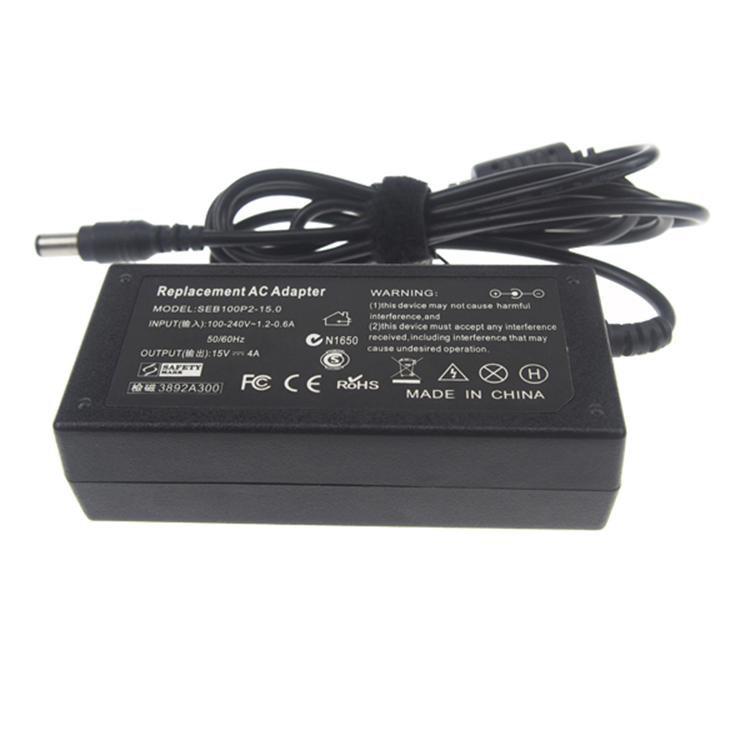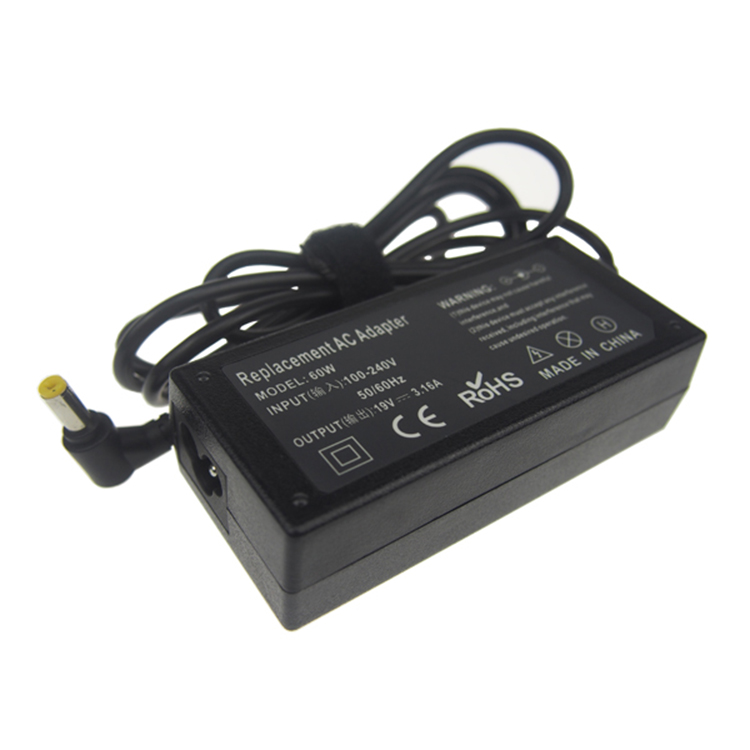How the PV Industry Breaks Through Growth "Ceiling"
Yidashun offer full replacement NEC Power Adapter for laptop with best service at the most competitive
prices! All our NEC Laptop Charger are Brand New Replacement Product, works as Genuine parts, 100% OEM Compatible!!
Our Adapter with smart IC to protect your laptop with over current protection,
over load protection, short circuit protection, over heat protection.
If your original NEC laptop
adapter is not work anymore, please tell us your laptop model, we
will help select the correct OEM replacement models for you. we offer a full 1 year warranty for our adapters.
NEC Laptop Charger,NEC Charger,NEC Adapter,NEC Computer Laptop Charger Shenzhen Yidashun Technology Co., Ltd. , https://www.ydsadapter.com
Obviously, in 2011, photovoltaic companies are not easy to fly. With a domestic battery module production capacity of 30 GW and a limited capacity in the domestic market, the subsidies for major PV markets such as Europe have plummeted, which has already hit the photovoltaic industry. It is hoped that the industry can no longer afford to save itself. According to incomplete statistics, over 50 small enterprises engaged in the production and manufacture of photovoltaic products were shut down last year in Jiangsu and Zhejiang. In addition, according to CCID Photovoltaic Industry Research Institute, 20% of PV companies stopped production in 2011, and 30% of companies fell into semi-discontinued production. At the same time, China has announced the reduction of gold solar project subsidy standards, and Germany and other European countries have also reduced their PV subsidies. Government subsidy has always been the supporting force for the survival of photovoltaic companies in various countries. Gradually reducing subsidies, whether the development capacity of photovoltaic enterprises can adapt to this pace, this is not just the problem of the entire industry's own level of development, and the most urgent need is for the government to give domestic PV. The company has injected new momentum to bring the photovoltaic companies on the edge of the crisis to a healthy development track. This is the responsibility and responsibility of a large photovoltaic country.
In order to increase the domestic market's guidance for the demand for solar power generation from policies, China has for the first time incorporated solar energy into its energy development plan this year and has set specific targets for 3 GW. At present, European governments have announced plans to reduce PV subsidies, but domestic PV power stations and power generation systems are hotly bidding, and photovoltaic “outside the cold†is evident. The “Notice on Doing a Good Job of Demonstrating the Golden Sun in 2012†jointly issued by the Ministry of Finance, the Ministry of Science and Technology, and the National Energy Administration formally opened the fourth phase of the “Golden Sun†roof project, highlighting this trend.
However, with the support of the government and the confidence of the industrial development prospects, not all photovoltaic companies will usher in a good opportunity. The Golden Sun also does not fundamentally change the status quo of overcapacity in the industrial chain and the collapse of large numbers of companies. Analysts believe that in 2012, the photovoltaic industry will accelerate integration. This round of integration is fundamentally different from 2008. At that time, industry consolidation was affected by the financial crisis. The company responded quickly, expanded its scale, and quickly won, but this round of integration may only be achieved by companies with high technology, high efficiency, and adequate funding. At present, the industry is maturing. In the international market situation, the industry has moved towards merger, consolidation, reorganization, and joint reshuffle. Photovoltaic companies with capital and technological advantages are continuing to promote technology research and development along the route of cost reduction. Large-scale production; and many non-competitive, backward production capacity will be eliminated, is conducive to the transformation and upgrading of China's photovoltaic industry and healthy development.
Sunde Power's CEO Shi Zhengrong believes that by 2015, solar power generation in half of the world will not be able to compete with traditional energy sources without subsidies. Meng Xianqi, deputy director of the China Renewable Energy Society, pointed out that it is expected that the photovoltaic power generation will achieve parity online access from 2017 to 2020, and the impact of policies will gradually decrease. This will be the road to a market mechanism, which will be the new round of industrial development peak. According to Fan Hanxiang, vice president of photovoltaic glass and glass-ceramics manufacturer Far East Optoelectronics Co., Ltd., although the era of profiteering in the photovoltaic industry has ended, the solar industry is moving in a healthier direction to produce cheap energy. For this industry we Full of hope and expectation. In fact, solar energy has been able to compete with fossil fuels in India, Hawaii, Italy and Spain.
China is not only the largest solar power producer, but also one of the most important renewable energy markets. According to NPDSolarbuzz data, China's market demand in 2011 increased by six times, which is the main reason for the Asia-Pacific region to achieve 165% growth. By 2015, China's solar installation capacity will reach 15GW. The survey report released recently by the Swiss bank Sarasin pointed out that between 2011 and 2015, Europe will shrink by 5% each year, and the global photovoltaic market will still increase by 20% this year. This is mainly due to the development of emerging photovoltaic markets such as China. Meng Xianjun stated that photovoltaic companies cannot always rely on the international market and must pay attention to the development of the domestic market. China's solar module production accounts for about half of the world's total output, but more than 95% of its exports. At the end of 2011, the United States filed anti-dumping lawsuits against Chinese PV companies, while the EU, India, etc. are also brewing to block China's PV. The road to export is undoubtedly bumpy and muddy. Perhaps the photovoltaic industry is currently only able to start domestic demand this way. It is reported that hundreds of solar energy companies in China are brewing and resuming work. If this is the case, the industry reshuffle that has just begun is suddenly suspended and the goal of destocking is not over, which is detrimental to the healthy growth of the industry.
Photovoltaic industry started the domestic demand market, nothing more than to start from the self-built photovoltaic power station and solar energy building integration, and the industry's yearning for photovoltaic power generation into the ordinary family, at present is still painting cakes. Meng Xianji believes that if Chinese PV companies want to continue to develop, they must change their strategies and methods. The original domestic photovoltaic companies rely on cheap labor and resource advantages in the international market, this road has now come to an end. In 2012, China's photovoltaic industry has to go through 'winter', and it is necessary to get rid of the embarrassing situation of photovoltaic raw materials and products “two ends outâ€, innovative technologies to reduce the production costs of polysilicon, and vigorously tap the domestic market to absorb and digest rapid growth in production capacity.
Of course, as an important part of strategic emerging industries, in recent years, the price of photovoltaic power generation has been significantly reduced throughout the industrial chain, making the main line of photovoltaic power generation particularly clear. Yang Bomin, chairman of Far East Optoelectronics Co., Ltd., stated that we are at a turning point in the development of energy. Traditional energy sources such as petroleum and coal are always used up. Solar energy is the last barrier to human survival. Fossil fuels will eventually disappear. However, the speed at which this shift occurs depends not only on the technical and industry efforts, but also on the government’s smart, forward-looking policies.
The photovoltaic industry is currently at a low point of development. In the face of this opportunity for further industrial adjustment, we have no reason, and no time to hesitate to wait and see. We should speed up structural adjustment, improve quality, develop into high-end fields, lead technology, seize the commanding heights of the industry, cope with competition from other countries, and break through industrial growth. The "ceiling". This will undoubtedly require the power of “creative destruction†of the industry to promote the emergence of industrial subversion. Once this time comes, the entire industry will undergo earth-shaking changes. The only survivors are customers - their needs are still established. This force may be due to technological advances, energy pressures and other complex factors.
During the “Twelfth Five-Year Plan†period, the government will focus on supporting backbone PV companies. At the end of the “Twelfth Five-Year Planâ€, 1-2 50,000-ton-grade polysilicon enterprises and 2-4 10,000-ton-grade polysilicon enterprises will be formed; 1-2 5GW levels will be formed. Solar cell companies, 8-10 GW-class solar cell companies; 3-4 photovoltaic-specific equipment companies with annual sales revenue of more than 1 billion yuan. In fact, facing the problems of overcapacity and not mastering core technologies, how can the photovoltaic industry break through the "ceiling" of growth? It is still not yet clear to see how incremental production capacity cannot be quickly digested in the growth of the industry. It is precisely because of this that the government’s investment in supporting funds depends not only on the size of the company, whether it has a state-owned assets background, but also on the technical level of the company and the true direction of the funds. “All the way to a green light†is not conducive to the use of funds and the development of the industry. Some experts pointed out that the growth of the photovoltaic industry must not only achieve technological breakthroughs, but also break the bottleneck of the policy system and complete a huge systematic project of system reform.
All reflections and summaries on industrial development will bring us deeper reflections. The breakthrough of the photovoltaic industry may be the self-breakthrough of our photovoltaic people. The photovoltaic industry is leading deep, all-round reforms. No matter whether it is the production process, conversion efficiency, or business model, it is undergoing a new round of innovation and change. Soon, we may, in a true sense, open up the entire industry chain of “PV China Manufacturing†and “PV China Applicationâ€, and then form a new industry to lead a new type of energy and drive the Chinese economy to achieve structural adjustment and industrial upgrading!


